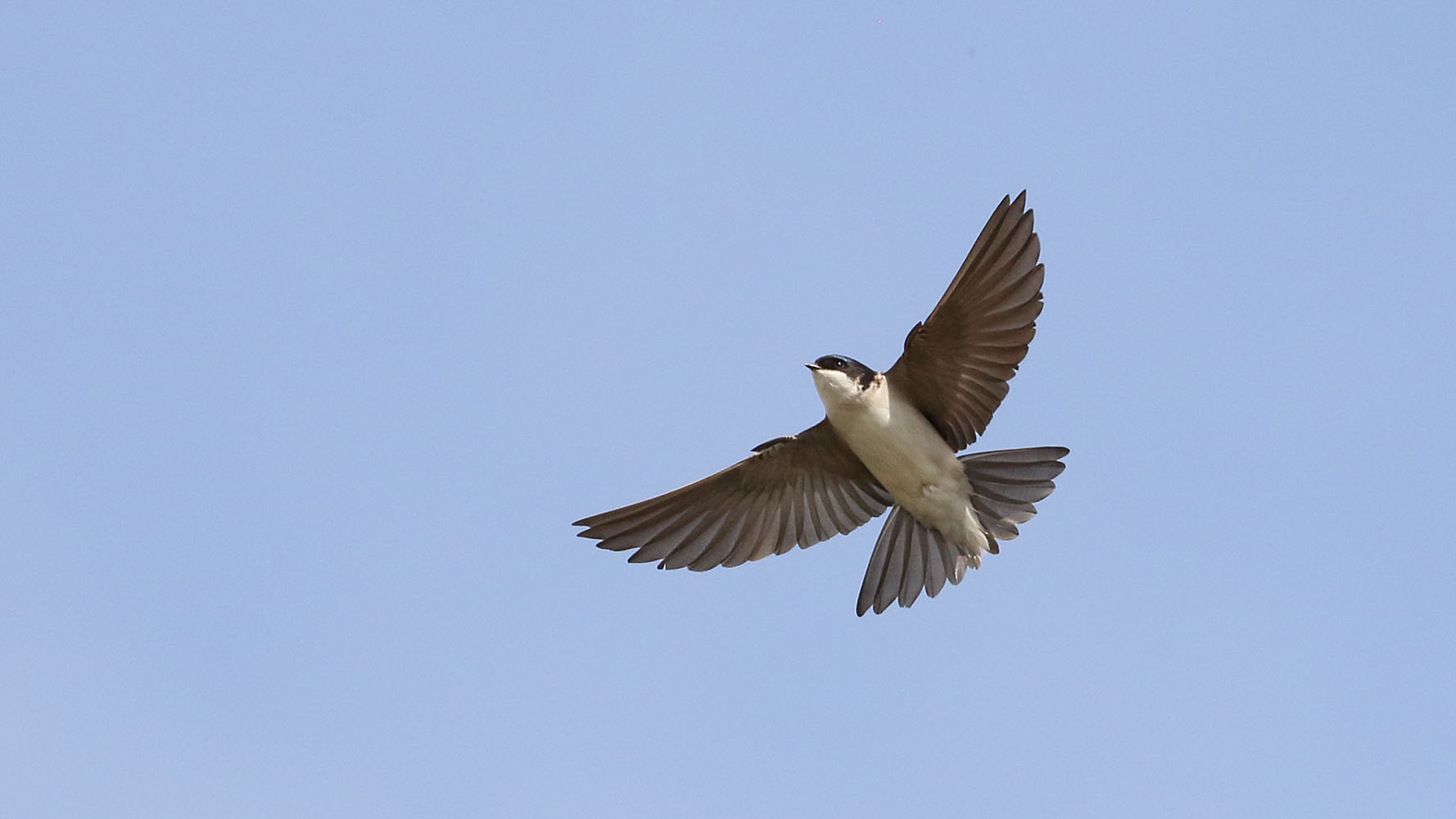
BirdTrack migration blog (late May–mid June)
Spring 2023 has been dominated by cooler temperatures and winds from the north and east and it is these weather patterns that have, for many migrant species, resulted in a slow and steady arrival. The past week has seen unexpectedly high numbers of common migrants still arriving, when ordinarily they would have stopped arriving in any numbers a couple of weeks ago. Portland Bird Observatory for example has this week recorded higher than normal numbers of Sedge Warblers, Chiffchaffs, Willow Warblers and Blackcaps compared to previous years. The same site also saw a big arrival of Spotted Flycatchers, with over 200 being noted flying through on 22 May. A further 59 were also seen on Bardsey three days earlier. Spotted Flycatcher is typically one of the last arriving spring migrants and this year has seen fewer reports than would be expected. Let us hope this pulse of birds this last week sees reports increase elsewhere across Britain and Ireland. This later arrival was also mirrored by increased reports of Swifts and House Martins during the past week.
An increase in the BirdTrack reporting rate for Common Sandpiper in the last week hints at a pulse of later arriving birds passing through on their way to Fennoscandia for the summer months. This delightful little wader can often be found along the edges of streams, muddy pools and reservoirs, its distinctive flickery flight and white wing bars helping distinguish it from the closely related Green Sandpiper.

Marsh Warbler song
Scarcer migrants reported during the last week included Temminck’s Stint, Red-backed Shrike and Quail. The number of Quail arriving each year is highly dependent on the weather conditions not only here but also further south, as this species breeds further south in Europe earlier in the year and then moves northwards in late spring.
The expected late spring arrival of Arctic Tern hasn’t yet materialised, much to the annoyance of many an inland patch birder. It will be interesting to see if they arrive in the next few days or if have they taken a different route on their epic migration.
Pick of the rarities last week was a brief Elegant Tern seen in Galway, whilst other notable rarities included a Semipalmated Plover in Wexford, a Caspian Tern in Norfolk, a Snowy Owl on Fair Isle and a Broad-billed Sandpiper in Northumberland and Orkney.
Looking ahead
During the next couple of months, the main focus for the majority of summer migrants will be breeding. Having arrived over the past few weeks, many will already be sitting on eggs or have young in the nest. Migration won’t stop altogether, but the volume of birds and diversity of species on the move will be greatly reduced. Any individuals that are migrating over the next few weeks will mostly be young birds that haven’t yet reached breeding age, or failed breeders that have attempted to breed further south and are now wandering around finding food or maybe a new area to try breeding again.
Summer is a time to get out and appreciate all those summer migrants that have untaken a variety of migration routes to get here and breed, and to learn to tell similar species apart. Remember to be mindful of all breeding birds and to minimise disturbance and if you are lucky enough to find evidence of breeding, even if its failed breeding or just a pair of birds in suitable habitat, please add this to your BirdTrack records.
The warmer evenings of early summer are a good time to listen for some of our nocturnal migrants such as Nightjar, their preferred habitat of heaths and woodland clearings are the best places to listen for them. If you arrive an hour or so before dusk you may also be lucky enough to find a hunting Hobby or a singing Tree Pipit.
Marshy habitats and reedbeds are also good places to visit during early summer, and again dusk or dawn can be the most productive times of the day. The dawn chorus can be fantastic with the songs of Sedge Warbler and Reed Warbler mingling with the simple song of Reed Bunting, and if you are lucky you may even hear a squealing Water Rail or a booming Bittern. Given the drier conditions across southern Europe, you may be lucky enough to find a Night Heron, Purple Heron, Spotted Crake, or Savi’s Warbler; the reeling song of the Savi’s Warbler is faster paced than the closely-related Grasshopper Warbler.

Late May is the peak time for one of our scarcest warblers to arrive. The Marsh Warbler is very similar in plumage to the Reed Warbler but it prefers a slightly drier and scrubbier habitat. The song of the Marsh Warbler is a fast-paced mix of typically scratchy notes and is full of mimicry of not only British birds, but also African species that they hear on their wintering grounds. The calls of Bee-eater, Common Tern, Swallow and Blackbird are favourites, but the range of mimicry varies from individual to individual.
Visiting a seabird colony in early summer can be very rewarding as you'll get to see a whole host of species that normally spend much of their lives far out to sea and away from land. The noise, the volume of birds, and the smell are something we should all experience once in our lifetimes and are one of the spectacles of the British Isles. If you live away from a seabird colony but are able to get to the coast, then June can be a good month to look out for seabirds such as Puffin, Manx Shearwater and Fulmar, all of which can cover large distances in search of food.
Early summer can be a productive time of year for rarities, with some very rare species recorded at this time of year over the years. The most likely species however are usually waders with Greater Sandplover, Terek Sandpiper, Great Knot and Collared Pratincole all possible. Flocks of Swifts are also worth scrutinising for Pacific Swift or maybe the rarer White-rumped Swift.
Send us your records with BirdTrack
Submitting your sightings to BirdTrack is quick and easy, and gives us up-to-date information about our migrating birds.
Every record, from Blackbird to Black-tailed Godwit, is valuable.
Find out more







Share this page